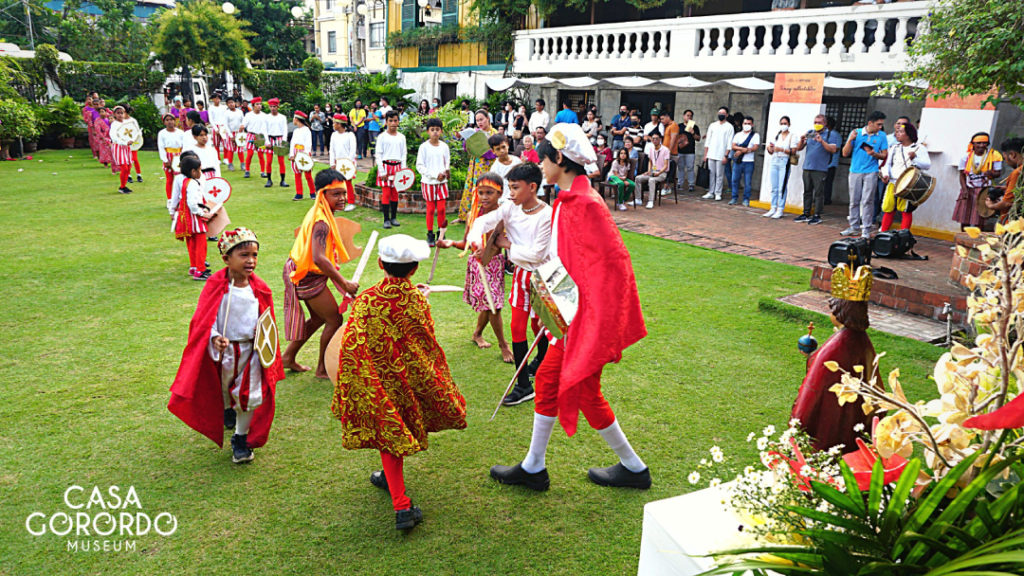
The Casa Gorordo Museum extends the celebration of the Cebuano’s devotion to the Sr. Sto Nino through this Sinug House Tradition. This culminates the museum’s performances in different malls and platforms the week prior to the Feast of the Sto Nino.
The Sinug is a traditional dance that signifies the natives’ devotion to the Santo Niño and the conversion of Cebu and the Philippines to Christianity by the Spaniards. A precursor to the widely known Sinulog, the dance was originally used to connote the eventual colonization of the islands during the Spanish period.
The story of the Sinug dance started in 1565 when the natives saw Legaspi and his men celebrating the rediscovery of the Santo Niño through a feast where the Spaniards allowed the natives to observe the festivities and were “struck in awe” in the reverence that was accorded to the Santo Niño. The Sinug inspired the Sinulog Street Dance where the choreography is more akin to the Moro-moro dance in the 17tth century.
In Parian, the Gorordo family were the primary hosts for the Sinug performance every Monday after the feast of the Santo. Niño as it was a way to pray for the souls of their departed loved ones.
After the Ramon Aboitiz Foundation Inc. (RAFI) converted the house as a public museum, Casa Gorordo Museum has carried over the house tradition since 1984 that only stopped due to the pandemic. The Casa Gorordo Museum will continue the house tradition after its two-year hiatus.
The traditional Sinug Dance is performed by the Mabolo Dance Troupe.


